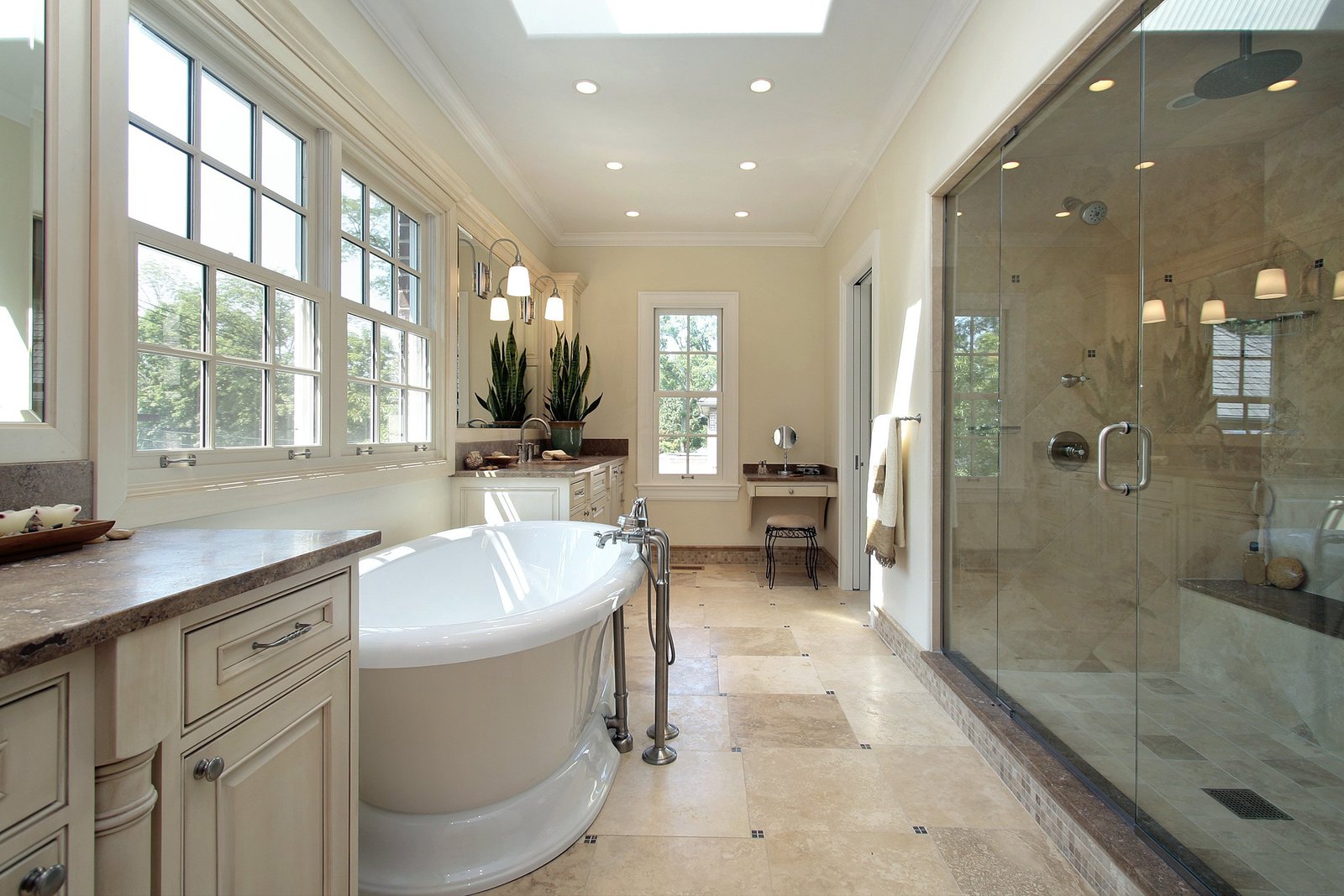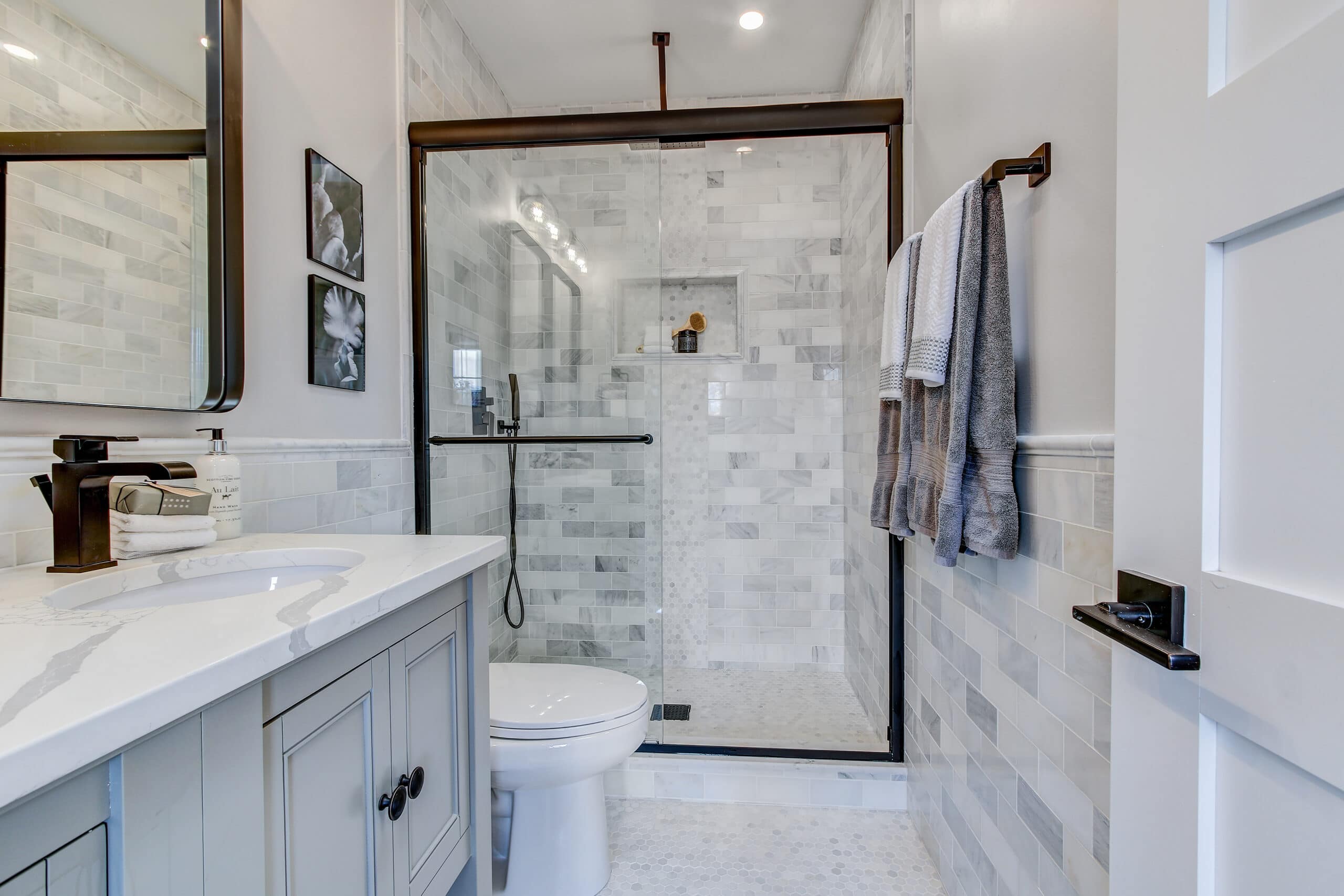Planning and Preparation: When Remodeling A Bathroom Where To Start

A well-planned bathroom remodel can transform your space into a luxurious oasis, but it’s essential to start with a solid foundation. Planning and preparation are crucial to ensure a smooth and successful renovation.
Creating a Detailed Budget
A detailed budget is the cornerstone of any successful bathroom remodel. It helps you stay on track financially and avoid unpleasant surprises.
- Start by listing all the materials you need. This includes fixtures like tubs, showers, sinks, toilets, and vanities, as well as finishes like tile, flooring, paint, and hardware.
- Research and compare prices. Shop around for the best deals on materials and fixtures, considering factors like quality, style, and durability.
- Factor in labor costs. Obtain estimates from contractors and include them in your budget.
- Allocate funds for unexpected expenses. It’s always wise to have a contingency fund for unforeseen issues that may arise during the renovation process.
- Track your spending meticulously. Keep detailed records of all your expenses to ensure you stay within your budget.
Measuring the Bathroom Space and Creating a Floor Plan
Accurate measurements are essential for planning a bathroom remodel. A well-designed floor plan will help you visualize the layout and optimize space utilization.
- Measure all walls, doors, and windows. Use a tape measure and record all dimensions carefully.
- Note any existing fixtures and their locations. This includes the toilet, shower, tub, sink, and vanity.
- Draw a floor plan to scale. You can use graph paper or a dedicated floor plan software.
- Experiment with different layouts. Try rearranging fixtures and exploring various design options.
- Consider the flow of traffic. Ensure there’s enough space for movement around the bathroom.
Essential Permits and Inspections
Many bathroom renovations require permits and inspections to ensure compliance with building codes and safety regulations.
- Check with your local building department. They can provide information on the specific permits required for your project.
- Obtain permits before starting work. This will help avoid delays and potential fines.
- Schedule inspections at the appropriate stages. Inspections ensure that work is done correctly and meets safety standards.
Consulting with a Professional Designer or Contractor, When remodeling a bathroom where to start
While you can certainly tackle a bathroom remodel yourself, consulting with a professional designer or contractor can be invaluable.
- Designers can help you create a functional and aesthetically pleasing space. They have expertise in layout, color schemes, and materials selection.
- Contractors can handle the technical aspects of the renovation. They have the knowledge and experience to ensure the project is done correctly and safely.
- Professional guidance can save you time, money, and headaches. They can identify potential issues and provide solutions, helping you avoid costly mistakes.
Choosing the Right Materials
Material selection is crucial for a bathroom remodel. Consider durability, aesthetics, and budget when making your choices.
- Flooring: Tile is a popular choice for bathroom floors due to its durability and water resistance. Other options include vinyl, laminate, and wood.
- Walls: Tile, paint, and wallpaper are common wall coverings for bathrooms.
- Fixtures: Tubs, showers, sinks, and toilets are available in various materials and styles. Consider your budget and design preferences.
- Countertops: Granite, marble, quartz, and laminate are popular countertop materials.
- Cabinets: Choose cabinets that are moisture-resistant and durable.
Demolition and Framing

The demolition and framing phase is the heart of any bathroom remodel. It’s where you strip away the old and build the new foundation for your dream bathroom. This stage requires careful planning, safety precautions, and a good understanding of building codes and regulations.
Demolishing Existing Fixtures and Finishes
Before you can start framing, you’ll need to demolish the existing fixtures and finishes. This process involves removing the old toilet, sink, shower, bathtub, vanity, flooring, walls, and ceiling. Safety is paramount during demolition.
- Turn off the water and electricity to the bathroom. This is essential to prevent accidents and ensure your safety.
- Wear safety glasses, gloves, and a dust mask. This will protect you from flying debris, chemicals, and dust.
- Use a pry bar, hammer, and other tools to carefully remove the fixtures and finishes. Start with the fixtures and work your way down to the walls and floors.
- Dispose of the debris properly. Separate the materials for recycling or disposal according to local regulations.
Identifying and Addressing Structural Issues
As you demolish the existing bathroom, be sure to pay close attention to any structural issues. These may include cracked or damaged framing, rotted wood, or uneven floors.
- Inspect the framing for signs of damage. Look for cracks, splits, or warping.
- Check for rotted wood. This is common in bathrooms due to moisture.
- Assess the floor for unevenness. This could indicate a problem with the subfloor.
If you find any structural issues, you’ll need to address them before you can proceed with framing. Consult with a structural engineer or contractor to determine the best course of action.
Framing Walls and Installing New Plumbing and Electrical Rough-ins
Framing is the process of building the new walls, ceilings, and floors of your bathroom. It involves using lumber to create a sturdy and stable framework that will support the new finishes.
- Plan the layout of your new bathroom. This includes determining the location of the walls, doors, windows, and fixtures.
- Build the walls using studs, plates, and headers. Use pressure-treated lumber for walls that will be exposed to moisture.
- Install new plumbing and electrical rough-ins. This involves running pipes and wires through the walls and floors before the walls are closed up.
- Plumbing rough-ins: This involves installing the pipes for the new toilet, sink, shower, and bathtub. Be sure to use the correct type of pipe for each application and follow local plumbing codes.
- Electrical rough-ins: This involves running wires for the new lighting fixtures, outlets, and ventilation fans. Use the correct type of wire for each application and follow local electrical codes.
Managing Dust and Debris
Demolition and framing create a lot of dust and debris. It’s essential to manage this properly to protect your health and the rest of your home.
- Use a dust containment system. This could include plastic sheeting, tarps, or a negative air machine.
- Clean up the debris regularly. Remove the dust and debris from the work area to prevent it from spreading.
- Wear a respirator mask. This will protect you from breathing in harmful dust particles.
Common Framing Materials and Their Pros and Cons
| Material | Pros | Cons |
|---|---|---|
| Wood | Versatile, easy to work with, affordable | Susceptible to rot and moisture damage |
| Metal studs | Strong, fire-resistant, moisture-resistant | More expensive than wood, can be difficult to work with |
| Concrete block | Durable, fire-resistant, soundproof | Heavy, difficult to work with, not as versatile as wood |
Finishing Touches

The final stages of your bathroom remodel are where the real magic happens. This is where you transform the structure into a functional and visually appealing space.
Installing Flooring, Tiles, and Wall Finishes
The choice of flooring, tiles, and wall finishes will significantly impact the bathroom’s overall aesthetic and functionality.
- Flooring: Consider the practicality of your chosen material. Waterproof and slip-resistant options like ceramic tile, porcelain tile, or vinyl plank flooring are ideal for bathrooms.
- Tiles: Tiles are a popular choice for bathroom walls and floors due to their durability, water resistance, and aesthetic versatility. You can select from a wide array of materials, colors, and patterns to create a unique look.
- Wall Finishes: Beyond tiles, you can opt for paint, wallpaper, or even a combination of both. When choosing wall finishes, consider moisture resistance and ease of cleaning.
Selecting and Installing Bathroom Fixtures
Bathroom fixtures are the functional elements that make the space usable.
- Sinks: Sinks come in various styles, sizes, and materials. Consider your bathroom’s size and your personal preferences when making your selection.
- Toilets: Toilets are available in various designs, with options ranging from traditional to modern. Factors like water efficiency and comfort are crucial considerations.
- Showers: Showers are a significant feature in most bathrooms. You can choose from a wide array of showerheads, shower enclosures, and shower systems to create a personalized experience.
Installing Lighting and Ventilation Systems
Lighting and ventilation are essential for both functionality and aesthetics in a bathroom.
- Lighting: Proper lighting is crucial for performing tasks like shaving, applying makeup, and getting ready in the morning. Consider using a combination of ambient, task, and accent lighting to create a balanced and functional lighting scheme.
- Ventilation: Ventilation is vital for removing moisture and preventing mold growth. Install an exhaust fan to remove steam and moisture from the bathroom, ensuring a healthy and comfortable environment.
Adding Decorative Touches
Decorative elements can transform a bathroom from functional to stylish.
- Mirrors: Mirrors are essential in bathrooms, not only for their practical use but also for creating the illusion of space. Choose a mirror that complements the bathroom’s style and size.
- Artwork: Adding artwork can personalize the space and reflect your taste. Consider artwork that complements the bathroom’s color scheme and style.
- Storage Solutions: Well-organized storage solutions are essential for keeping a bathroom tidy. Use shelves, cabinets, and drawers to store toiletries, towels, and other bathroom essentials.
Bathroom Design Styles
Different bathroom design styles offer a unique aesthetic.
| Design Style | Key Features |
|---|---|
| Modern | Clean lines, minimalist aesthetics, sleek fixtures, neutral color palettes, natural materials. |
| Contemporary | Similar to modern but with a more eclectic feel, incorporating bold colors and textures. |
| Traditional | Classic elements, ornate fixtures, warm color palettes, wood accents, and traditional patterns. |
| Rustic | Natural materials, rough textures, earthy tones, reclaimed wood, and vintage fixtures. |
| Industrial | Exposed brick, metal accents, dark color palettes, vintage lighting, and industrial-style fixtures. |
When remodeling a bathroom where to start – When remodeling a bathroom, starting with a solid plan is crucial. Consider your needs, budget, and desired aesthetic, then dive into the details. If you’re in Staten Island, a reputable contractor can help you navigate the process. Check out bathroom remodel Staten Island for inspiration and guidance.
Once you have a clear vision, you can begin tackling the individual aspects of your bathroom remodel, from fixtures to flooring to finishes.
When remodeling a bathroom, starting with a clean slate is essential. Before you dive into demolition and design, give your existing fixtures a good scrub with a best bathroom cleaner without bleach to reveal the true state of your space.
This will help you determine what needs to be replaced, repaired, or simply given a fresh coat of paint. Then, you can move on to the exciting part – choosing new tiles, fixtures, and finishes!